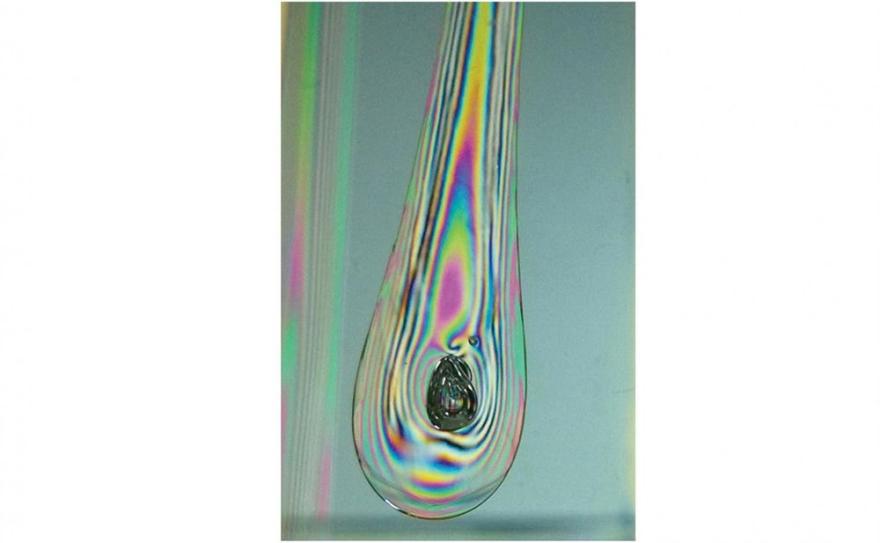 جدید
جدیدکشف راز معمای ۴۰۰ ساله فیزیک – اشک های Batavian
کشف راز معمای ۴۰۰ ساله فیزیک – اشک های Batavian
کشف راز معمای ۴۰۰ ساله فیزیک – اشک های Batavian
تیمی از دانشمندان موفق به کشف معمای ۴۰۰ ساله فیزیک شدند. قطرات «شاهزاده روپرت» به اندازهای قوی هستند که فقط با چکش میتوان آنها را در هم شکست. با این حال، چنانچه فردی انتهای این قطرات را با فشار انگشت بشکند، به شکل پودر در میآیند.
حدود ۴۰۰ سال است که فیزیکدانان به دنبال توضیح این پدیده هستند و به تازگی تیمی از دانشگاه پردو، دانشگاه کمبریج و دانشگاه صنعتی تالین در استونی این معما را حل کردهاند. قطرات شاهزاده روپرت که اشک های Batavian نیز خوانده میشوند، در قرن هفده کشف شدند. آنها زمانی معروف شدند که شاهزاده روپرت اهل باواریا در آلمان، پنج معما را در دربار چارلز دوم انگلستان مطرح کرد.
انجمن سلطنتی انگلستان در سال ۱۶۶۱ شروع به بررسی این قطرات کرد اما برخلاف چهار قرن تلاش محققان برای حل این معما، راز استحکام فوقالعاده و همزمان شکنندگی خودتخریبی این قطرات در هالهای از ابهام باقی ماند. این قطرهها با استفاده از حبابهای داغ و قرمزرنگ شیشه ذوب شده با ضریب انبساط حرارتی بالا و انداختن آنها در ظرفی از آب سرد تولید میشوند؛ شیشه ذوب شده بلافاصله به شکل قطره دمدار جامد در میآید.
دانشمندان حاضر در این مطالعه از فتوالاستیسیته یکپارچه شده برای بررسی این قطرات استفاده کردند. در این تکنیک، یک شی سه بعدی شفاف در نوعی حمام غوطهور معلق میشود و نور پلاریزه از میان آن عبور میکند. تغییرات حاصل شده در قطبیدگی نور در درون شی، به شکل نوارهای رنگین کمان به نمایش در میآید. فیزیکدانان حاضر در این مطالعه بر روی سر قطره متمرکز شدند و دریافتند فشارهای کمپرسی (compressive stress) در شیشه حدود ۵۰ تن در اینچ مربع است و این ویژگی به آن استحکام فولاد را میدهد.

به گفته تیم تحقیقاتی، این امر به این خاطر است که سطح بیرونی قطره سریعتر از داخل آن سرد میشود و این موضوع سطح بیرونی را به لایهای متشکل از نیروهای فشاری قدرتمند تبدیل میکند و این نیروها به داخل قطره فشار میآورند. نیروهای کمپرسی توسط نیروهای کششی داخل قطره متعادل میشوند و تا زمانی که این نیروها در حال تعادل باقی بمانند، قطره در وضعیت باثبات است و میتواند فشار فوق العادهای را تحمل کند.
معمولا چون شیشه نوعی مایع فوق سرده شده است و نه جامد، هر ترکی در سطح آن گسترش یافته و آن را میشکند. اما در قطره شاهزاده روپرت، تعامل بین نواحی داخل و خارجی، این نیروها را به حاشیه میراند به طوری که ترکها نمیتوانند گسترش یابند. با این حال، چنانچه دم قطره شکسته شود، ترکهای موجود در آن گسترش مییابند، به محور قطره نفوذ کرده و وارد سر قطره میشوند. آسیب وارده به حدی بزرگ است که نیروهای متعادل شده آزاد میشوند و موجب انفجار قطره میشوند. جزئیات این کشف و دستاورد علمی در Applied Physics Letters منتشر شد.
منبع : www.newatlas.com
۴۰۰year-old mystery of Prince Rupert’s drops finally cracked
A Prince Rupert’s drop looks like a glass tadpole from a beginner’s crafts festival, but it’s so strong it can take a hammer hit without breaking. That would be impressive enough, but if you break its tail, which can be done with finger pressure, the drop explodes into powder. The reason for this has mystified scientists for 400 years, but a team from Purdue University, the University of Cambridge, and Tallinn University of Technology in Estonia finally has an answer.
Also called Batavian tears, Prince Rupert’s drops were discovered in the 17th century and became famous when Prince Rupert of Bavaria presented five of the curiosities to Charles II of England. These were turned over to the Royal Society for study in 1661, yet despite four centuries of research, the secret of the drop’s combination of great strength and self-destructive fragility remained elusive.
Along with Purdue professor of industrial engineering Srinivasan Chandrasekar, team leader Hillar Aben of Tallinn University used integrated photoelasticity to investigate the drops. This is a technique where a transparent 3D object is suspended in an immersion bath and polarized light is passed through it. The alterations in the light’s polarization inside the object show up as rainbow bands that correspond to stress lines.
ocusing on the head of the drop instead of the tail, the current study found that the compressive stresses in the glass are about 50 tons per square inch, which gives it the strength of some steels. According to the team, this is because the outside of the drop cools faster than the inside. This turns the outside into a layer of powerful compressive forces pushing inward. These are balanced out by the tensile or pulling forces inside the drop.
So long as these forces remain in balance, the drop remains stable and can withstand tremendous punishment. Normally, because glass is a supercooled liquid rather than a solid, any cracks in the surface propagate at the speed of sound through a glass object, breaking it.
But in a Prince Rupert’s drop, the interface between the inner and outer regions deflects the forces sideways, so the crack can’t propagate. However, if the tail is broken, The shallow cracks in the tail shoot parallel to the axis of the drop, deep into the head, and into the interface. The damage is so great that the balanced forces are released, causing the drop to explode.
“The tensile stress is what usually causes materials to fracture analogous to tearing a sheet of paper in half,” says Purdue postdoctoral associate Koushik Viswanathan. “But if you could change the tensile stress to a compressive stress, then it becomes difficult for cracks to grow, and this is what happens in the head portion of the Prince Rupert’s drops.”
The research was published in Applied Physics Letters .











دیدگاه کاربران